New Zealand, a country made up of two major islands in the Pacific Ocean southeast of Australia, is renowned for its impressive mountains and beautiful landscapes.
Almost the whole western coast of the South Island, which runs along to the Tasman Sea, is protected as part of four different national parks that all share a common border.
Nearly 800 lakes dot New Zealand, most of which were formed by glacier activity ages ago and are now framed by towering peaks and other breathtaking scenery.
12. Lake Rotoiti
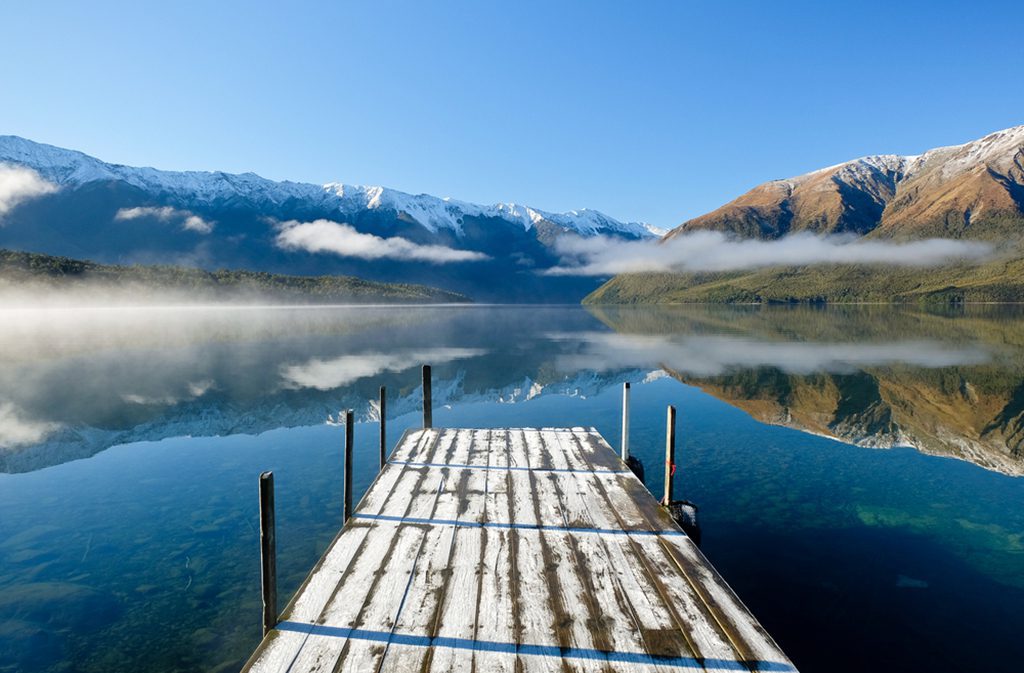
In New Zealand’s Tasman Region, Lake Rotoiti is a popular recreation area inside the Nelson Lakes National Park; it was formerly known as Lake Arthur, after the English Army captain who was among the first Europeans to see it in 1843.
On its northern, eastern, and western sides, Lake Rotoiti is hemmed in by some of the highest peaks in the surrounding Saint Arnaud Mountain Range.
Because of their height, the peaks are covered in snow for most of the year, giving the lake and its surroundings a European Alpine appearance.
11. Lake Ohau
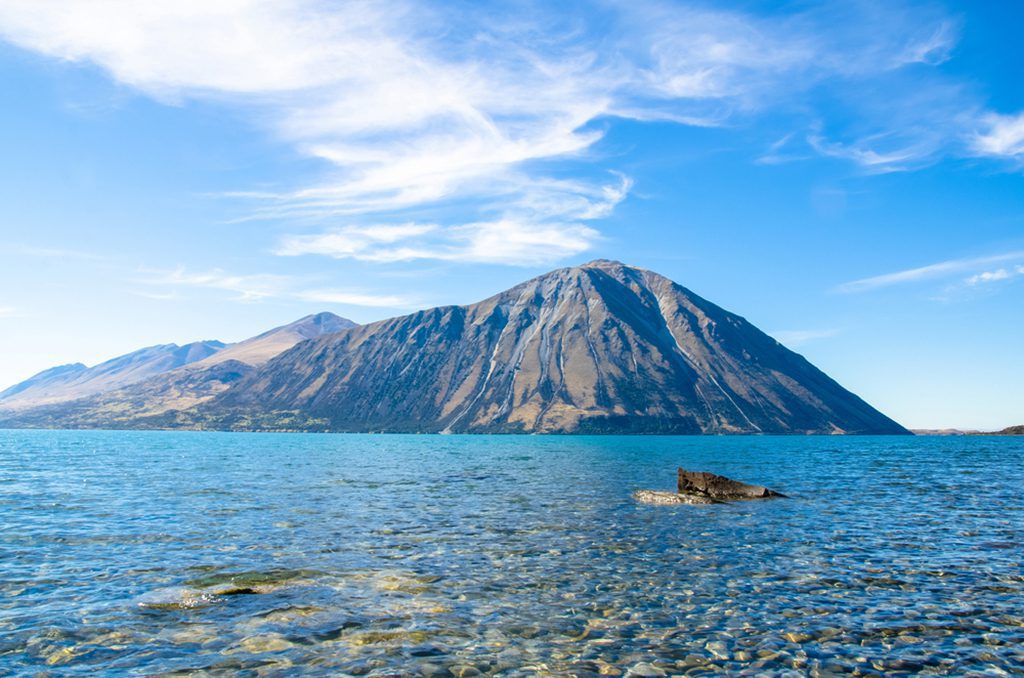
Lake Ohau is located in the Mackenzie Basin on the South Island, and it was created there millennia ago as a result of glacial activity.
It’s one of three similar lakes running north to south, all fed by rivers that begin their trip in the Southern Alps and then join together to form the Hopkins and Dobson.
Lake Ohau Snow Fields is one of the best places in the country to go skiing or snowboarding in the winter because of its height, yearly snowfall, and wide variety of slopes for skiers and snowboarders of all skill levels.
Depending on the actual weather, the ski season might extend anywhere from early August to late October. In the warmer months, visitors can enjoy activities such as fishing, hiking, and kayaking.
10. Lake Manapouri
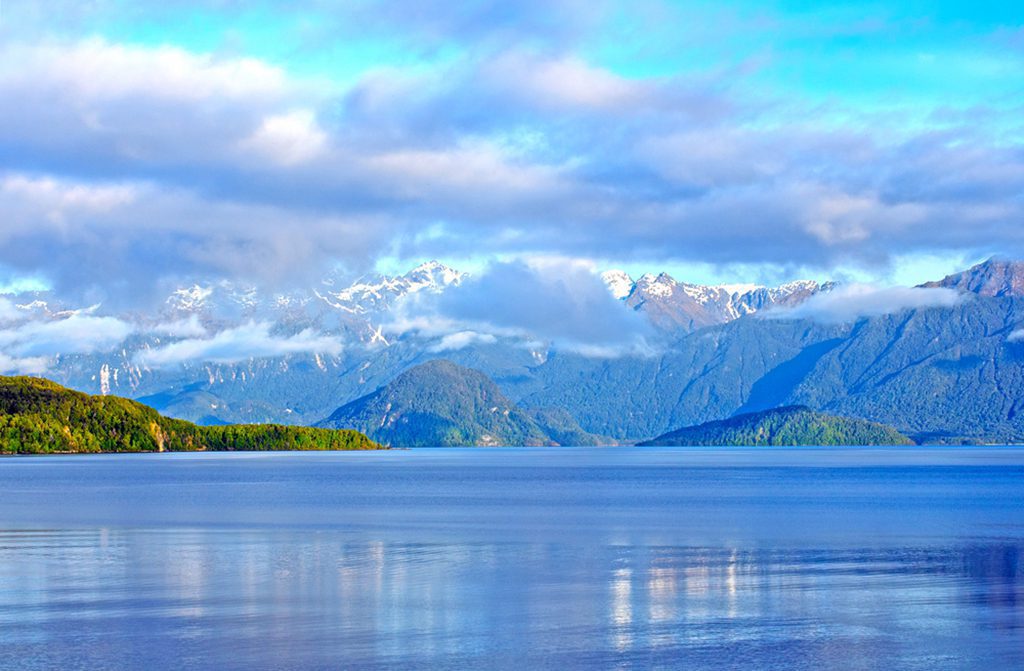
Lake Manapouri is one of the deepest lakes in New Zealand, and it is surrounded by stunning mountains in Fiordland National Park.
Manapouri, situated near the lake, is an excellent home base and the starting point for numerous guided tours of New Zealand’s distinctive glacial landscape.
At the lake’s western end is a massive dam and power generation station, and tours are offered for anyone interested in learning more about the inner workings of this manmade structure.
Guests often say that the most captivating part of their New Zealand vacation was visiting the nearby Doubtful Sound, which is both dramatic and beautiful.
9. Lake Te Anau
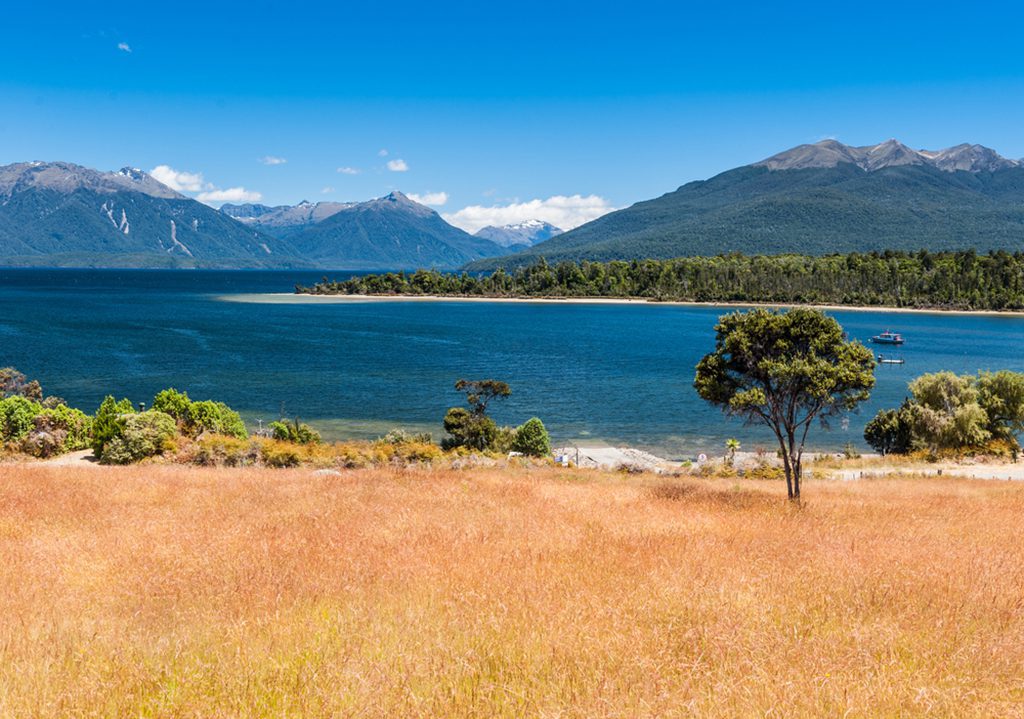
Located in the southwestern part of the South Island, Lake Te Anau and the town of the same name are excellent bases from which to explore the surrounding area, which includes the world-famous Fiordland National Park.
There is a wide variety of places to stay, from fancy hotels to rustic lodges, from luxury resorts to affordable campgrounds.
Although the lake can become crowded during the peak months of January through March due to its stunning landscape and closeness to other famous tourist locations, there is so much to see and do that you will quickly forget that you aren’t there alone.
Glowworm caves, which are only accessible at certain times of the year, and a bird sanctuary are both within easy driving distance and make for fascinating day trips.
8. Lake Hawea
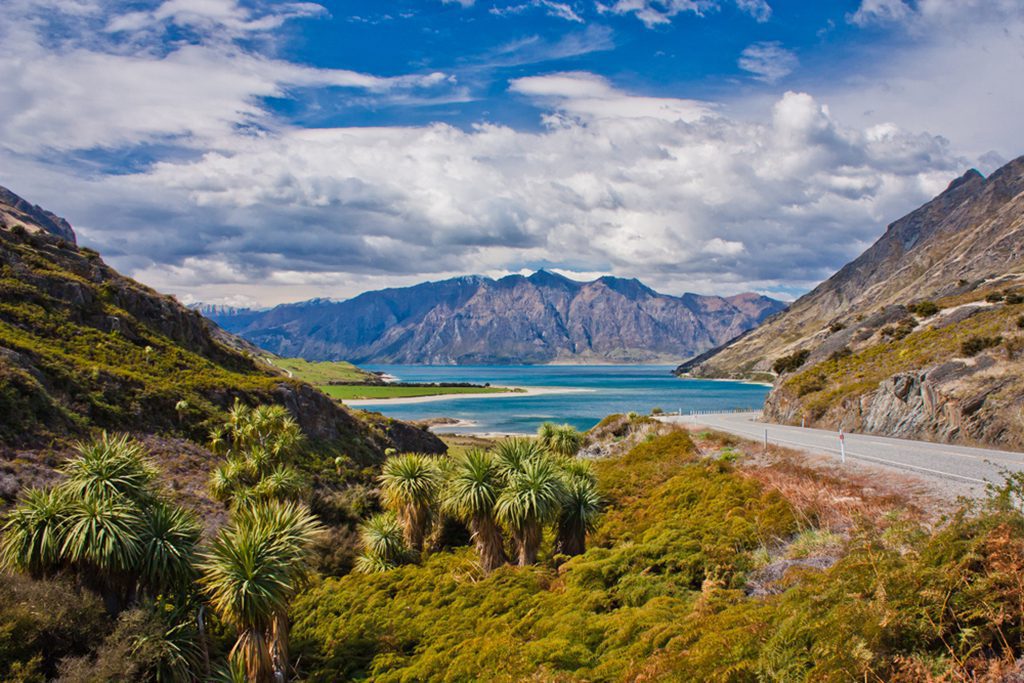
Lake Hawea, located just a short distance from Lake Wanaka, is a popular place for kayakers, wind and kite surfers, and fishermen looking to keep active during their summer vacation.
Lake Hawea’s surroundings are more rough and beautiful than those of any other New Zealand lake because of the massive, steep mountains that plunge down into the lake’s depths.
Lake Timaru is fed by the Timaru River, which offers excellent hiking trails, picnic areas, and camping opportunities, as well as some of the most breathtaking scenery in the vicinity.
The lake’s cool temperature holds even during the warmest summer months.
7. Lake Matheson
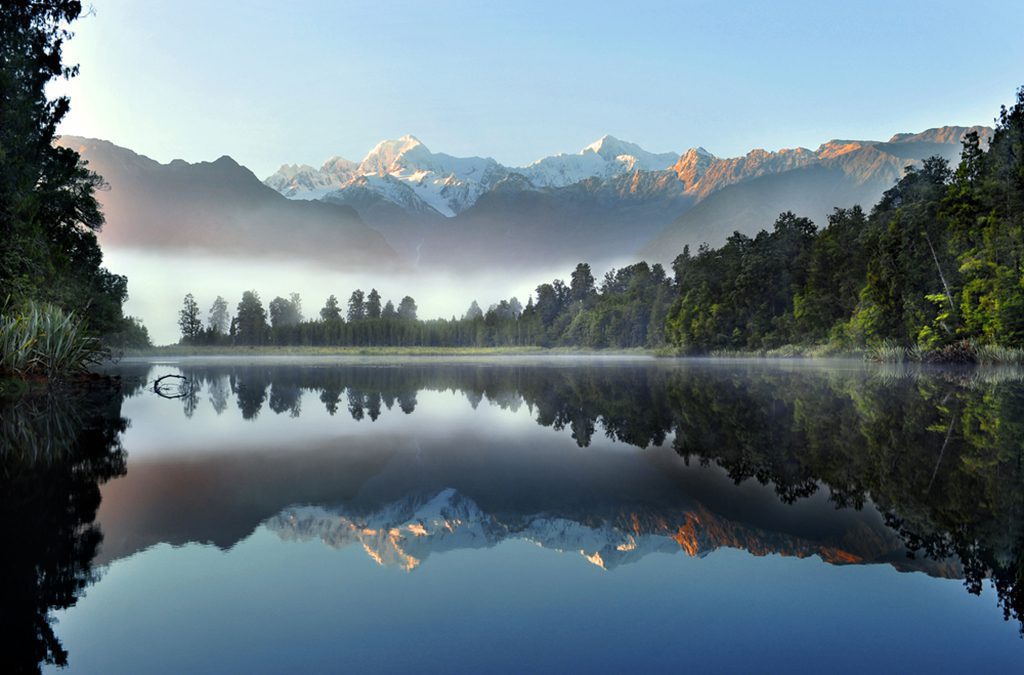
Lake Matheson, famous for its tea-colored waters and surrounded by old forests, also has the Clearwater Suspension Bridge, which offers breathtaking vistas that appear to harmoniously blend the man-made and natural worlds.
Large types of eels are also found in the lake, and they can frequently be seen feeding near the surface, particularly when there is no wind and when the light is low, such as in the morning or afternoon.
Beautiful views of Mount Cook and Mount Aoraki frame the lake, and several hiking trails allow access to lookout places from which to take them in.
6. Lake Taupo
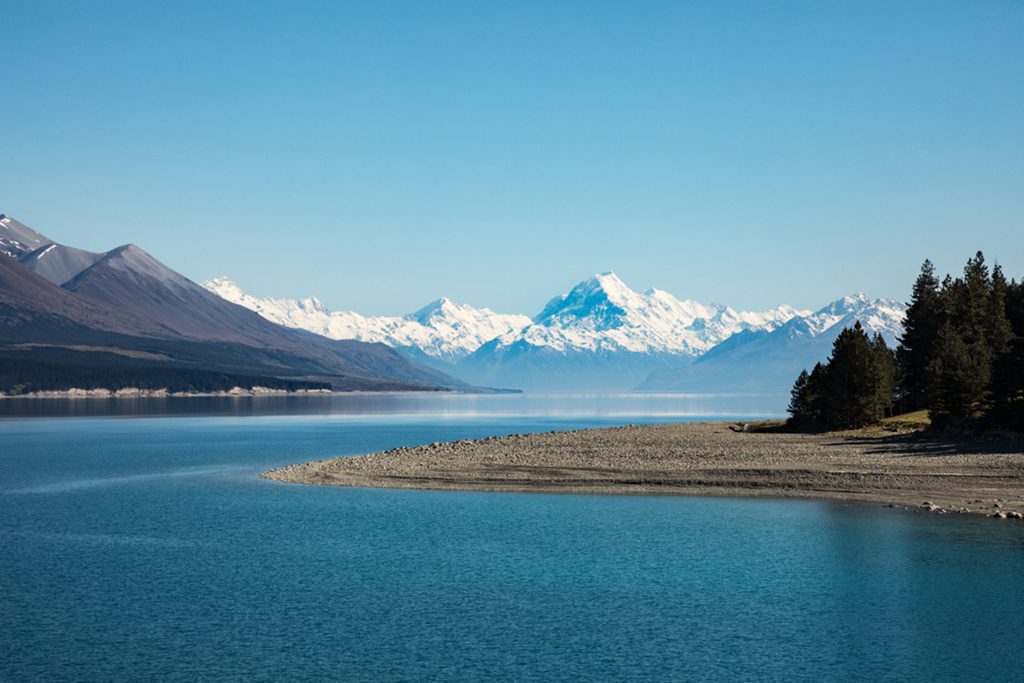
Lake Taupo, located on the North Island, is a caldera formed by the eruption of the volcano of the same name.
It is the country’s largest lake by surface area and, given its volcanic origins, has geysers, steam vents, and bubbling mud pools all year long.
There are designated beach areas that are perfect for swimming, sunbathing, and paddleboarding, and in many parts of the lake, the water is warmed by geothermal forces below the surface.
The Maori carvings in Mine Bay are an intriguing cultural attraction.
One of New Zealand’s most spectacular and often-seen sights, the roaring Huka Falls, is not far from Lake Taupo.
5. Emerald Lakes
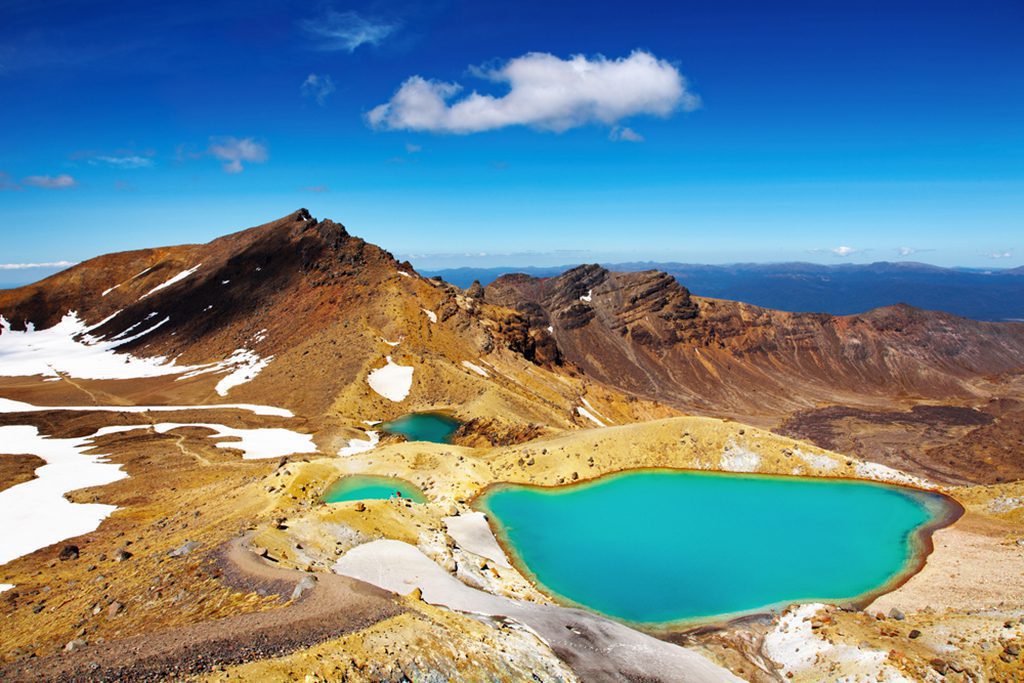
The Emerald Lakes, located in New Zealand’s Tongariro National Park, are a key element of the Tongariro Alpine Crossing, a full-day trip that is highly regarded among outdoor enthusiasts.
The lakes have a lunar quality since they are surrounded by some of New Zealand’s most breathtaking volcanic structures.
You won’t have the lakes to yourself if you go in the summer, but the beautiful colors of the water against the backdrop of the surrounding mountains will more than make up for the crowds.
Every one of the Emerald Lakes is unique and beautiful in its own way because of the variety of colors they take on, from aquamarine to jade to turquoise.
4. Lake Wakatipu
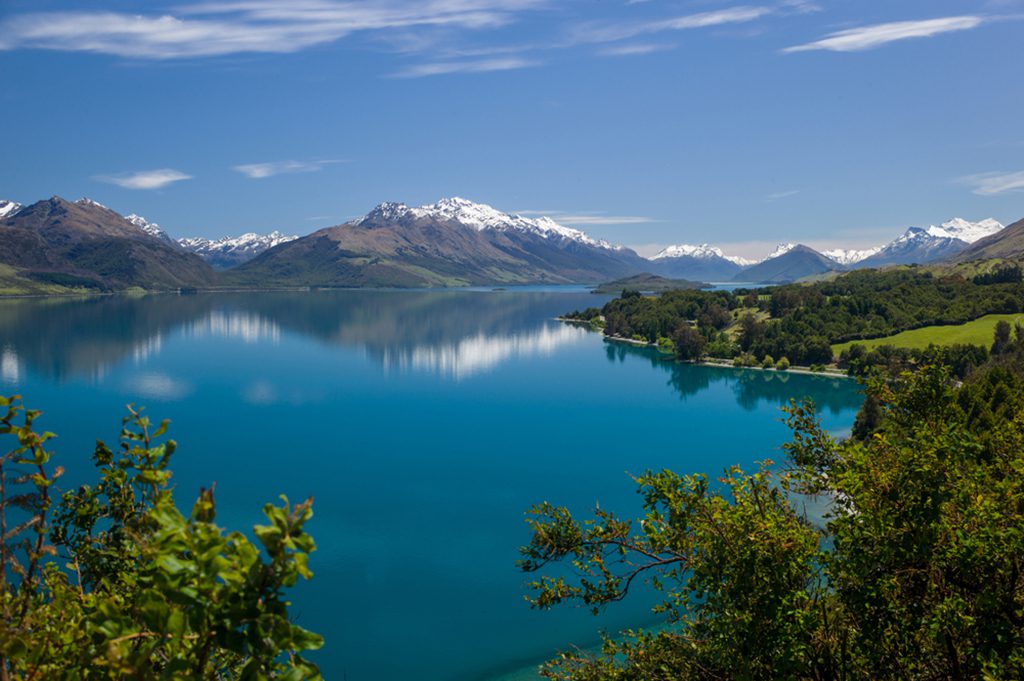
Lake Wakatipu, located in the Otago Region of the South Island, is the longest of New Zealand’s lakes at approximately 80 kilometers (50 miles) in length.
It is supplied by the Dart River in the north and is surrounded by both high, frequently snowy mountains and low, rocky hills that give the impression of being in a desert.
One of the most common ways to explore the lake is on a boat trip, which can take you to locations you can’t see from the shore. The lake also has dedicated bathing areas with white sand beaches, where you can relax in the sun and cool down in the water.
3. Lake Pukaki
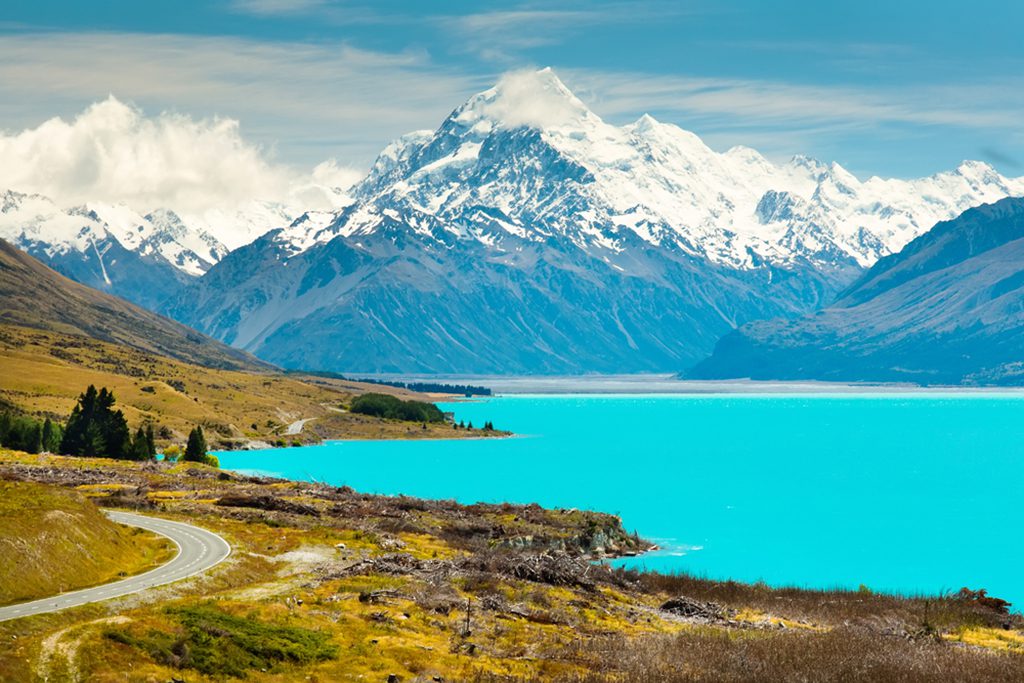
Lake Pukaki, like Lakes Tekapo and Ohau, is a big lake that borders the Mackenzie Basin and can be found in the middle of the South Island, around halfway between the Pacific and Tasman Seas.
The lakes are surrounded by some of the most beautiful alpine scenery in the country and were produced by glacier activity millennia ago.
Mount Cook, the area’s most notable peak, is blanketed in snow for the better part of the year, and the lake’s waters frequently have a hazy but vibrant aquamarine hue, making for stunning photographic opportunities and giving the impression that this coloration could not possibly exist naturally.
2. Lake Wanaka
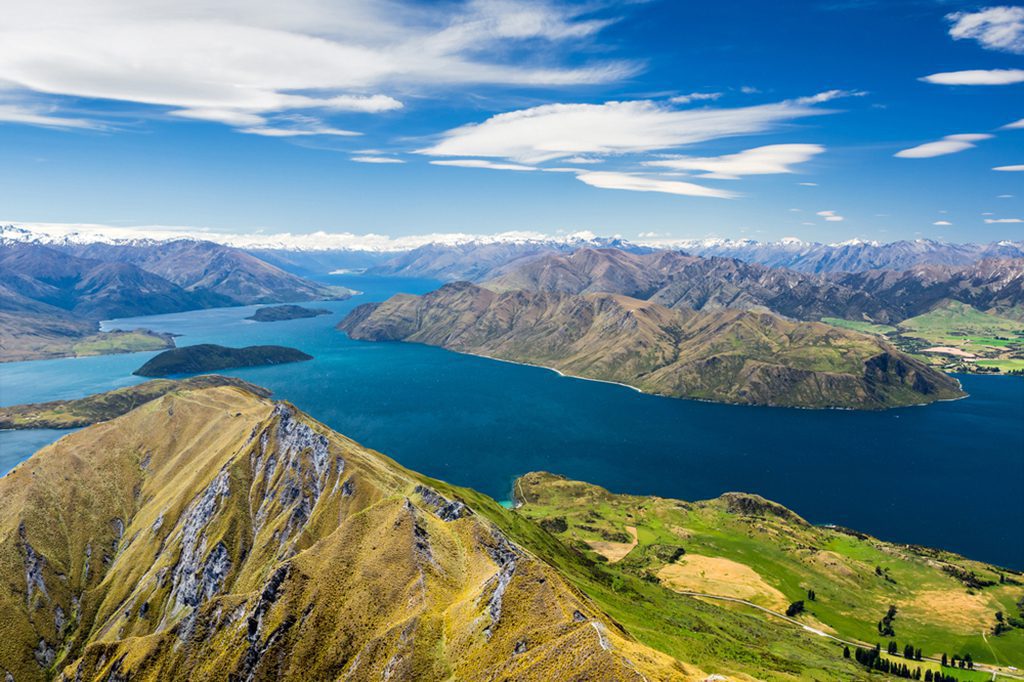
Lake Wanaka, in the Otago Region of New Zealand’s South Island, is situated in the Southern Alps at an elevation of approximately a thousand feet above sea level.
With its near proximity to Mount Aspiring National Park, this destination is perfect for nature lovers who want to get away from the madding crowds.
The nearby town provides a nice contrast, and it’s full of trendy restaurants, art galleries, and shops where you can while away a few hours after a day in the sun.
Because of the four distinct seasons that affect the Lake Wanaka region, you’ll never be at a loss for things to do while you’re there.
1. Lake Tekapo
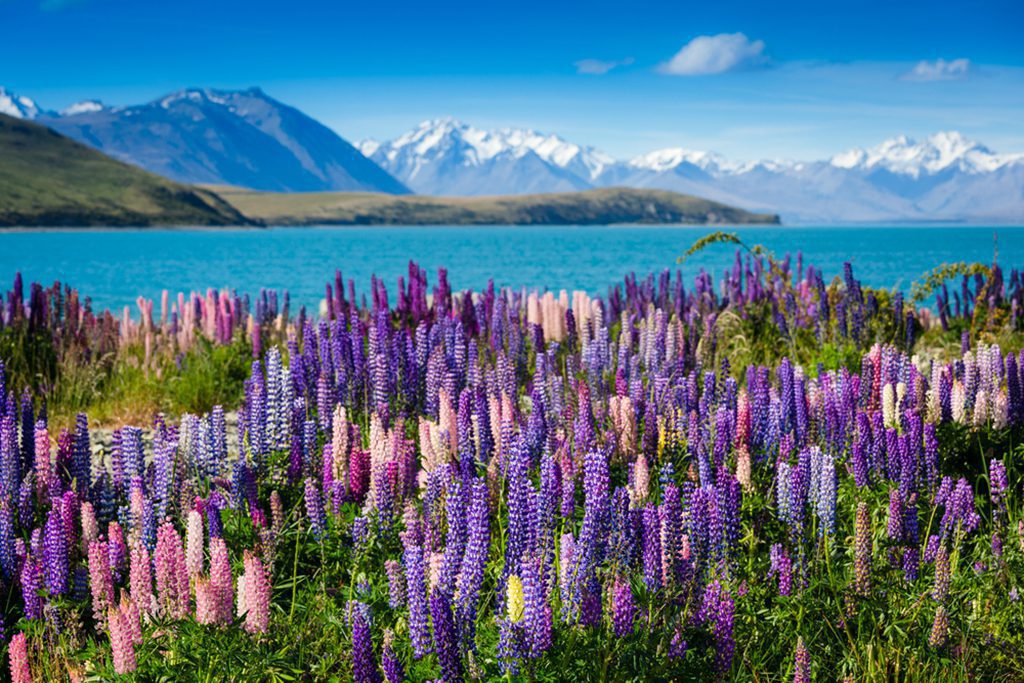
North and south in the Mackenzie Basin on the South Island are three parallel lakes, one of which is Lake Tekapo. The Godley River, which originates in the Southern Alps and flows northward into the lake, is responsible for providing the high-altitude lake with its constant supply of clear, cool water.
There are a few resorts in the nearby towns, and there is also a regional park that provides tourists with a wide range of recreational opportunities. Lake Tekapo, located little over 100 km west of Christchurch, is a popular day travel choice for people on the go but short on time.
It is famous for its rocky and rough coastline, the towering snow-capped mountains that dominate the skyline, and the lavender wildflowers that bloom in the spring.



